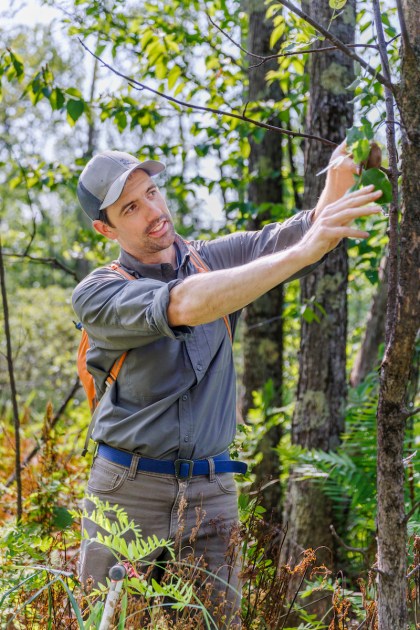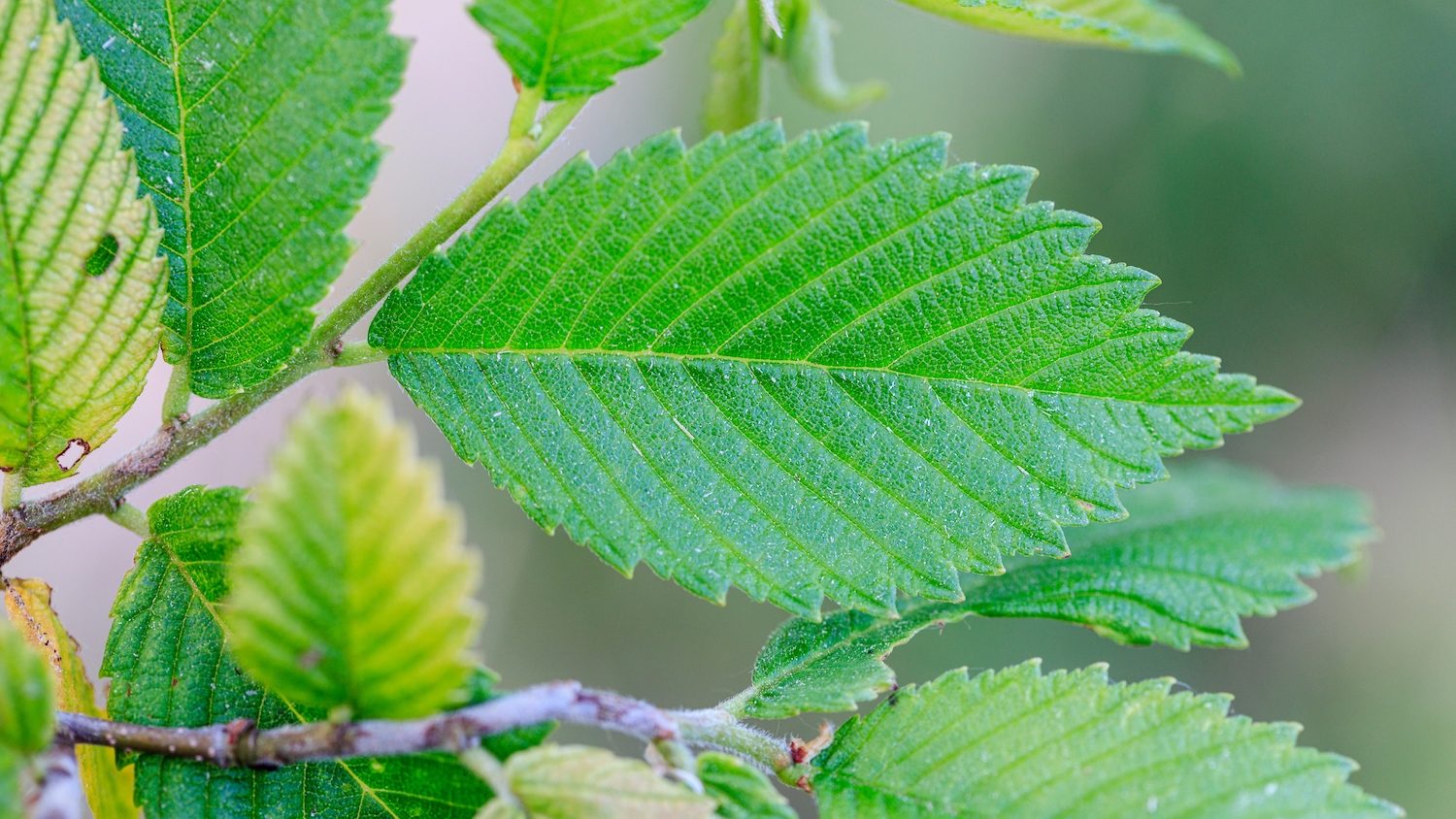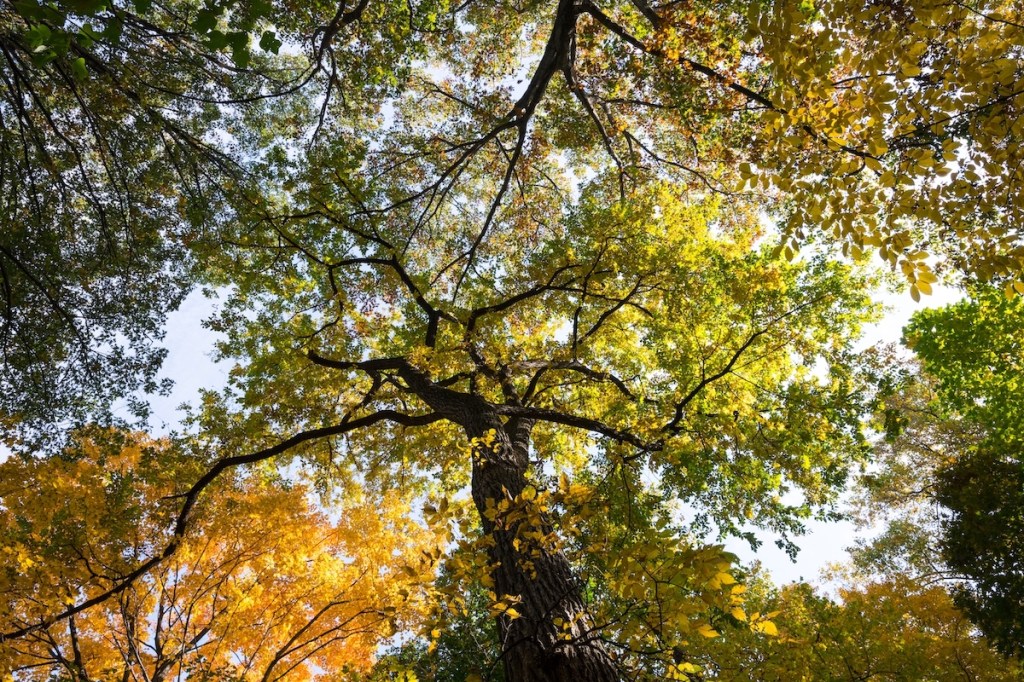America’s elm trees once arched over main streets and lined rivers in the northeastern United States, providing shade and soaking up floodwaters. But in the 1970s, a disease known as Dutch elm disease swept through them, and the trees that once made “Elm Street” a common name came down.
More than a decade ago, Christian Marks, an ecologist formerly at The Nature Conservancy, began working to identify trees in the northeastern U.S. that had survived the disease. For the last several years, the U.S. Forest Service and TNC have genetically crossed survivor trees like the ones Marks identified with other elms, hoping to grow resistant trees for restoration purposes.
Gus Goodwin, a senior conservation planner for TNC in Vermont, inherited the program from Marks. In this Q&A, Goodwin tells how the project came to be, why it involves quite literally injecting disease into the trees and why he’s convinced this might be the effort that finally saves the American elm.
- Lots of trees are in trouble in the U.S. There’s the ash tree struggling against the emerald ash borer, the beech trees struggling against beech leaf disease, and the American chestnut was all but annihilated by chestnut blight. What’s so important about the elm ecologically?
-
The American elm is considered a foundational species in our floodplains. You’ve probably heard the term “umbrella” or “keystone” species. Foundational is exactly what it sounds like: It’s the foundation for a fully functional mature floodplain forest in the Northeast, and it has an incredible range. It’s the only floodplain forest tree in the northern floodplains that is both shade-tolerant and flood-tolerant.
The problem is that it never reaches its full ecological potential. It never reaches old age because of Dutch elm disease. A lot of these trees die by the time they’re 50 or 60 years old, but an elm could live 400 years.
- Fifty years is still a long time! What are we missing in those 350 years of growth?
-
Well, big trees and all the benefits that they provide. There’s the carbon storage. There’s the habitat value. There’s something like 200 species of insects that feed on American elms. A fully functional, mature floodplain forest is also going to do a better job of slowing and spreading floodwaters than an immature, vulnerable forest.
It’s important to understand too that our northern floodplains have really low diversity of tree species. And ash is the only other tree that plays a somewhat similar role as elm in our region. But, of course, it’s threatened by the emerald ash borer. So, the species most poised to fill in for elm is imperiled by another invasive species.
- Dutch elm disease first arrived in the United States in the 1920s—a fungal pathogen carried by both introduced beetles and native bark beetles that deprives a tree of water and nutrients until it dies. It really took off in the decades after World War II though, and it seems like people have been trying to find an answer ever since.
-
Yeah, elms are such an iconic and beloved species that as soon as people realized what the disease was and what it was doing, the universities, the government, lots of people stepped in to try to work on it. In fact, there’s a whole chapter in “Silent Spring,” Rachel Carson’s book, about the DDT that was sprayed all over elm trees to try and save them from bark beetles. It’s been top of mind, for lots of people, for a long time.
The Conservancy’s involvement really stems from Christian Marks’ work on the Connecticut River floodplains. He recognized that if we want to be in the business of protecting and restoring floodplains to their full ecological function, we need to address Dutch elm disease.
- How did TNC’s work with the elm get started?
-

TNC scientist Gus Goodwin examines a black ash tree in a wetland in Cornwall, Vermont.© Jerry Monkman At the time there were a handful of trees that had been recognized by the scientific community as having some tolerance of Dutch elm disease. What that meant was, each of those “varieties” as we call them, were genetically identical: Every “Princeton elm” is a genetic clone of a single tree that was found in a cemetery in Princeton, New Jersey, that didn’t succumb to the disease. That’s just not enough diversity to start thinking about doing real restoration, and they’re not especially adapted to the New England climate.
So the goal that Christian and his Forest Service colleagues had was to work with the New England elm population to identify survivors of Dutch elm disease and then cross them with these other trees that have already been shown to have some degree of tolerance.
The first survivor elms were identified and sampled by TNC and the Forest Service in 2011, and then in 2016 the project really expanded. One of my early contributions was going out and scouting some of the survivor elms and talking with the landowners and getting their permission to come back with an arborist to obtain tissue from the trees.
- So you got samples of diseases-resistant elm trees. Then what did you do with them?
-
The early phase was to establish orchards. The U.S. Forest Service had been working with tree populations in the Upper Midwest and Lower Midwest. So, we worked together to create this experiment with replicates where the elm trees crossed with these other varieties were planted out in big trial sites in Vermont and in Ohio, where the Forest Service’s lab is. We have four big blocks of trees growing up together now—two in Ohio and two in Vermont.
- And you’re talking thousands of experimental elm trees. What does it take to grow them all?
-
So, one of the interesting things about growing trees for this project is that [the trees] need to hit a certain standard form before they’re ready to be part of the experiment. So not only do we have to plant them, we have to get them to grow to a certain size and height, and then we prune them into the right shape: We need all the trees to be an inch diameter at breast height with a single unbranched stem.
So, we’ve done a lot of pruning and tons of site maintenance to get these trees to that height and diameter at the two Vermont sites: One of them is a TNC preserve and one is in a wildlife management area.

- How do you then check if they’re resistant to the disease?
-
Well, it turns out the only way to see if a tree is tolerant of Dutch elm disease is to inject it with Dutch elm disease. The Forest Service has used this technique in other tree populations, so they know that it works, and it helps identify survivors. They’ve got the whole thing kind of down to an art.
Now that the trees are big enough, the Forest Service is starting to inject trees in Ohio, and we’ll start to do that next year in Vermont.
- What does it look like to “inject” a tree with Dutch elm disease?
-
You take a cordless drill and put a hole in the bottom of the tree and stick it with this micro pipette—like you would have used in a biology class. It has the pathogen in it. Then you come back and see how the tree’s doing. Then you measure the percentage of branches that are dying back. In general, elms succumb to the disease within 2 years, but the results may be apparent fairly quickly.
- There have been a lot of efforts to save elms over the years. What makes you confident this one will work?
-
Well, people have been successfully breeding plants for nearly as long as we’ve been humans, right? The Forest Service has been doing this type of work for a long time, and there’s a lot of science that shows that this kind of controlled breeding can really work. We’ve done everything we can to stack the odds in our favor through the selection of trees that we included in the breeding program. We’re putting those through this forced genetic bottleneck with the disease inoculation, and hopefully, we can bring together the trees that come out on the other side in a seed orchard and continue to breed them with each other. The seed can be shared out with our partners for restoration work.
- So, this isn’t the end, then? The team might continue breeding the trees to enhance their resistance?
-
Yep, and we also want to allow that resistance to co-evolve with the disease which is out in the landscape and evolving on its own.
A big piece of this too is the American elm among the more widely distributed trees in the eastern forest. There’s genetic diversity within that population at a huge scale. And if you’re just taking a few survivors and trying to restore across the range, there’s always going to be work to try to bring in more genetics from individual sites or microclimates or habitat types or regions to try and improve the pool. That’s one of the things that these seed orchards can help do.

These older trees are being bred for resistance to Dutch elm disease at the US Forest Service’s Northern Research Station in Ohio. © Eric Aldrich / The Nature Conservancy
- What ultimately is the conservation potential of these trees?
-
Well, in the northeast the leading impacts of climate change are flooding—really severe, damaging, destructive flooding. And among the many things we can be doing is restoring functional floodplains by revegetating bare floodways. Across the U.S., there’s really widespread need for reforestation of floodplains. Something like 9 million acres of floodplain could be restored—that’s about the size of Connecticut.
But to do that, you need the species that are going to thrive in those environments over the long haul for those investments to be worth it. And elm is a really important one.
- It doesn’t hurt that people just seem to love elm trees.
-
Yeah, the bulk of the loss happened for people in about the 1970s. It’s current enough that it hits at this nostalgia for people that is really potent.
There are still so many people alive who can remember when the trees came down on their street, or when they lost the tree in their backyard. As a species, we’re so bad at looking forward, right? It’s hard to really visualize what’s going to happen. If we lose all our ash, say, what’s that going to feel like? It doesn’t motivate people in the same way that like, “as a kid, I remember this happened.”
So the support for the elm work has really been amazing. I’ve knocked on a lot of different doors to talk about different conservation issues over the years. Most people—they probably don’t want to hear from me about wildlife, or whatever. But every time I walk up to a house and say, “Hey, you have an amazing tree in your front yard. Can I talk to you about that?” People are so psyched to know that you are interested in their tree and that it has potential to help.
A version of this article ran in Nature Conservancy magazine’s Issue 3, 2025. Read more articles on bobcats, sustainable ranching, orangutans in Borneo and more at nature.org/magazine.




So glad to hear that this work to bring back elm trees is being done. I too grew up with several large elm trees in my backyard only to see them cut down in the sixties. I may not be around to see the elm return to the numbers they once were but I hope those that do will appreciate your diligence and hard work.